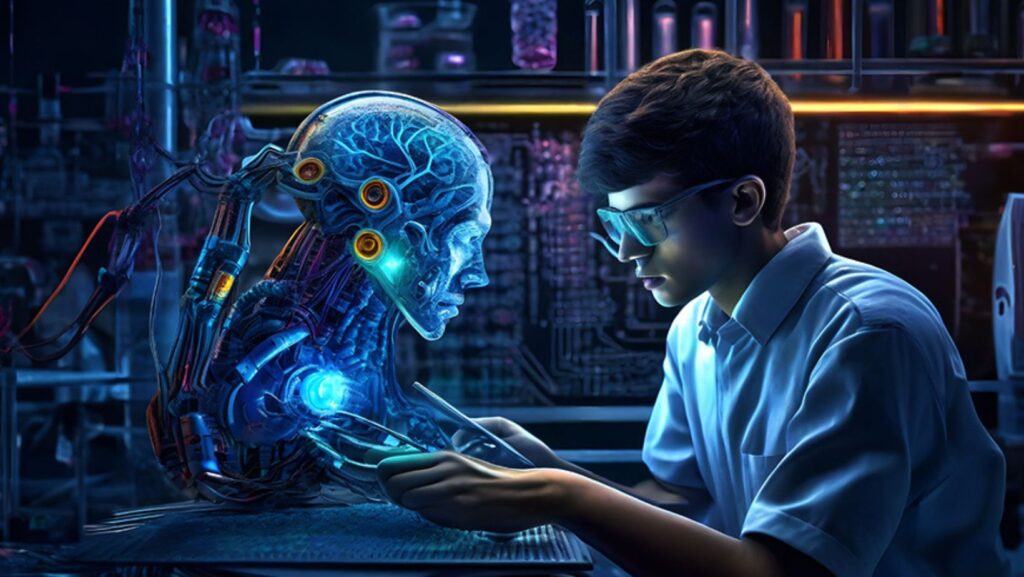Everything changes; however, the notion of ‘Customer is King’ has remained constant since the introduction of economics. Due to this notion, businesses for centuries have focused on understanding their customers and their needs. Customer needs continue to change, and keeping up with these changing needs and expectations is the key focus of businesses.
Businesses know that the only way to sustain in the market is by aligning their product strategies with customer expectations. If they design and develop products or services that match their customer’s needs, then they can ensure sustainability in the long run.
Thus, businesses are always looking for advanced technologies that can help them optimise product development processes. Here, generative AI, a groundbreaking technology, plays a key role in helping businesses to transform the way products are conceptualised, designed and developed.
What is Generative AI?
Generative AI is the subset of artificial intelligence that uses machine learning algorithms to generate new content, designs, or solutions based on pre-existing data. Traditionally, AI is capable of only analysing the available data and providing insights based on analysis. However, generative AI is capable of utilising old data, studying the patterns, and generating completely new results.
In this context, generative AI tools have the potential to mimic human creativity, thus offering creative solutions to professionals when it comes to product development. So, for professionals who aim to advance careers in product development, enrolling in a generative AI course is a great opportunity to excel in the job role.
Role of Generative AI in Product Development
Product development is an intricate process that involves several stages, from ideation to prototyping to manufacturing. Generative AI has the potential to optimise this process and improve overall outcomes. Here’s what generative AI can do through the development process:
Accelerate Design Process
Traditional product design often involves long cycles of brainstorming, sketching, prototyping, and testing. With generative AI, these cycles are shortened dramatically.

Designers can input initial parameters such as size, weight, material, and performance goals, and the AI generates multiple design options in a fraction of the time. This rapid iteration allows companies to explore a wider range of possibilities and experiment with more ideas, all while saving valuable time.
Ensure the Functionality of the Product
Generative AI can also optimise product designs by balancing functionality and aesthetics. For instance, AI-driven design tools can create structures that are both visually appealing and structurally sound, factoring in considerations like load-bearing capacity, durability, and material efficiency. By analysing vast datasets and leveraging machine learning, generative AI tools can suggest design improvements that human designers might overlook.
Improve Personalisation Scope
One of the most significant impacts of generative AI on product development is its ability to offer mass customisation. In industries such as fashion, automotive, and consumer electronics, companies are increasingly focusing on personalised products that cater to individual preferences. Generative AI enables businesses to create tailored products by generating designs based on customer data, including personal preferences, ergonomic requirements, or even body measurements. This level of customisation enhances the user experience, while the automated nature of generative AI ensures that production remains efficient and scalable.
Reduce Wastage in the Development Process
Generative AI optimises designs for manufacturing, which means companies can reduce material waste and lower production costs. By analysing the entire lifecycle of a product, from raw materials to end-use, AI can suggest ways to minimise waste, improve material efficiency, and streamline manufacturing processes. For instance, generative AI might recommend alternative materials that are both cost-effective and environmentally friendly, helping businesses meet sustainability goals while maintaining product quality.
Improve Collaboration Among Different Development Teams
Generative AI bridges the gap between designers and engineers, facilitating seamless collaboration throughout the product development process.

Designers can focus on creative exploration, while AI ensures that the designs meet engineering requirements. This integration of design and engineering reduces miscommunication and costly reworks, ultimately resulting in a more cohesive and efficient workflow.
Growing Demand for AI Skills in Product Development
As generative AI becomes more prevalent in the product development space, there is an increasing demand for professionals who are skilled in AI technologies. Engineers, designers, and product managers are expected to understand how to work with AI-driven tools and how to integrate AI into the product development lifecycle. By enrolling in a gen AI course, professionals can acquire the necessary skills to stay relevant in an AI-powered future.
A generative AI course typically covers key concepts such as machine learning, neural networks, and natural language processing (NLP), all of which are essential for understanding and working with AI models. Additionally, these courses provide hands-on experience with AI tools and platforms, allowing professionals to apply their knowledge to real-world projects.
By learning to utilise generative AI tools, product designers can take their creativity to the next level and design innovative products that are very functional. The entire design and development process can be streamlined. So, it is evident that businesses should choose engineers, designers, and product managers with AI skills over professionals who don’t have AI skills.
Conclusion
Generative AI is revolutionizing the way products are developed, offering faster design iterations, enhanced creativity, and greater efficiency. As businesses continue to adopt AI-driven tools, the demand for professionals skilled in AI and machine learning will only grow. By taking a generative AI course, individuals can position themselves as leaders in the product development landscape, driving innovation and delivering cutting-edge solutions.
